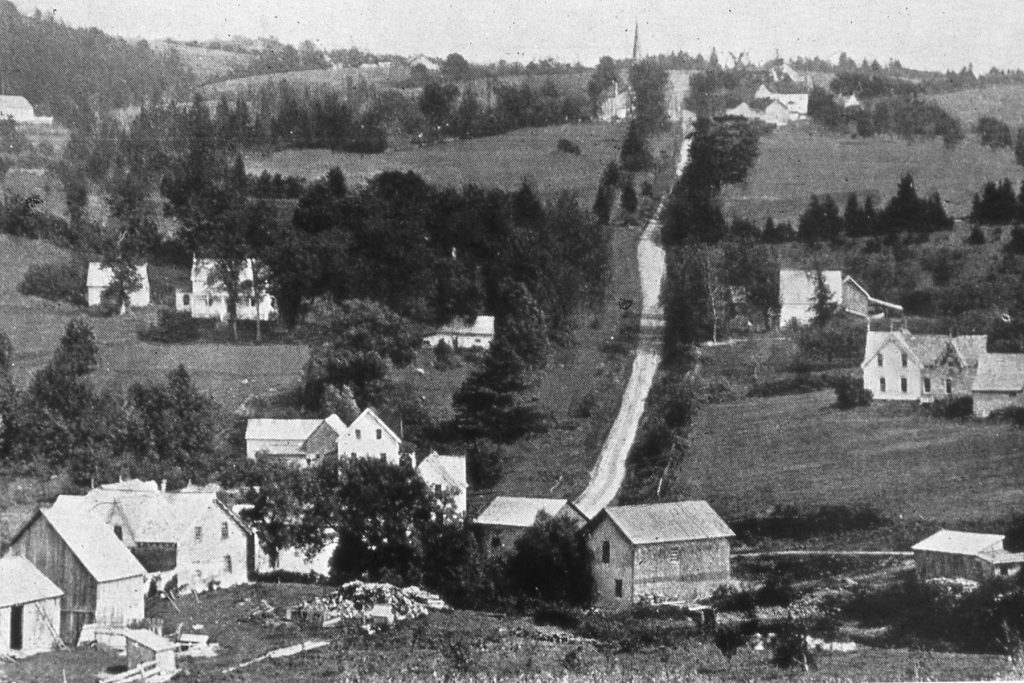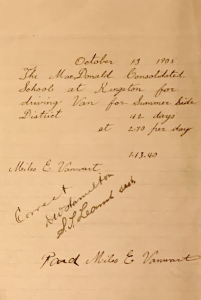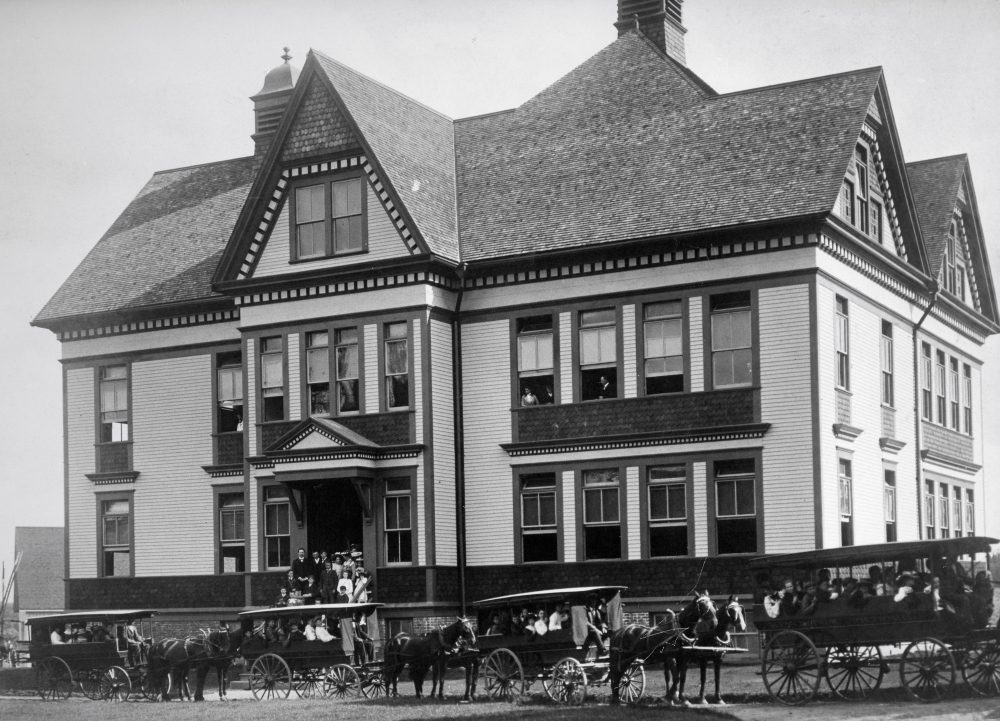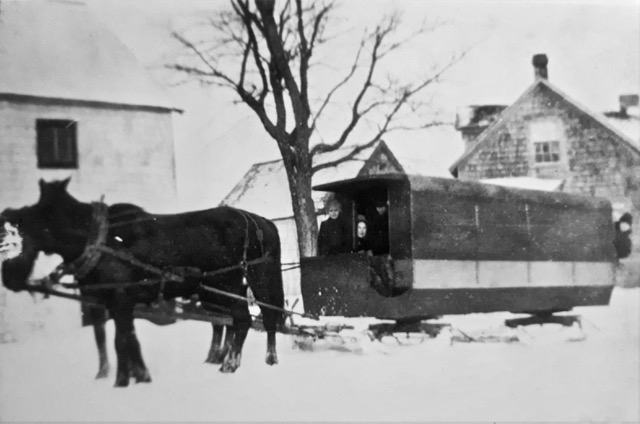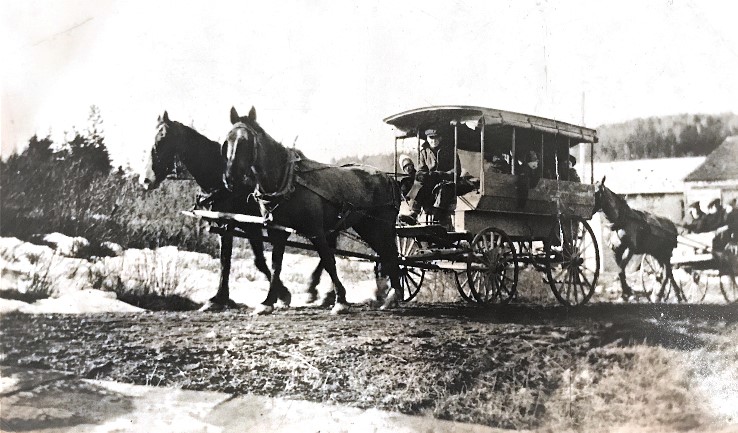Student conveyance
The idea of providing student transportation is new. Many don’t believe that it can work. There are no hard surface roads in New Brunswick. In winter and spring, overland travel can be challenging. One of the main reasons Kingston is chosen for the school is that the students have no public transportation options. There is no railway here. If the proposed school vans work here, with the rolling hills and high spring freshets, they will work anywhere in the province.
Macdonald provides seven horse-drawn wagons called school vans. A shed is furnished to shelter the horses and drivers during school hours. The Macdonald Rural School Fund covers half the cost of the van driver salaries. The drivers receive, on average, $2 a day. For that pay, they have to provide the horses, feed them, and keep them in good health. Drivers have to remain in Kingston during school hours. That often precludes other gainful work.
The first winter the snow is sometimes five to ten feet deep. Special covered sled vans are constructed at a cost of $38 each. Some days the students get out and walk alongside the van to help the horses. There are very few days when the vans don’t make it to school, but some days the journey is difficult. One February day in 1905 the Clifton van, carrying 28 children, overturns in a snowdrift. While none of the children are hurt, it takes 20 men to clear the road to allow the van to proceed.
Officials are happy with the results of the conveyance arrangement. They credit this particular innovation with the doubling of regular school attendance.
In later years, the cost of horse-drawn transportation will be the largest expense of the school.
The school building itself is our next topic.


